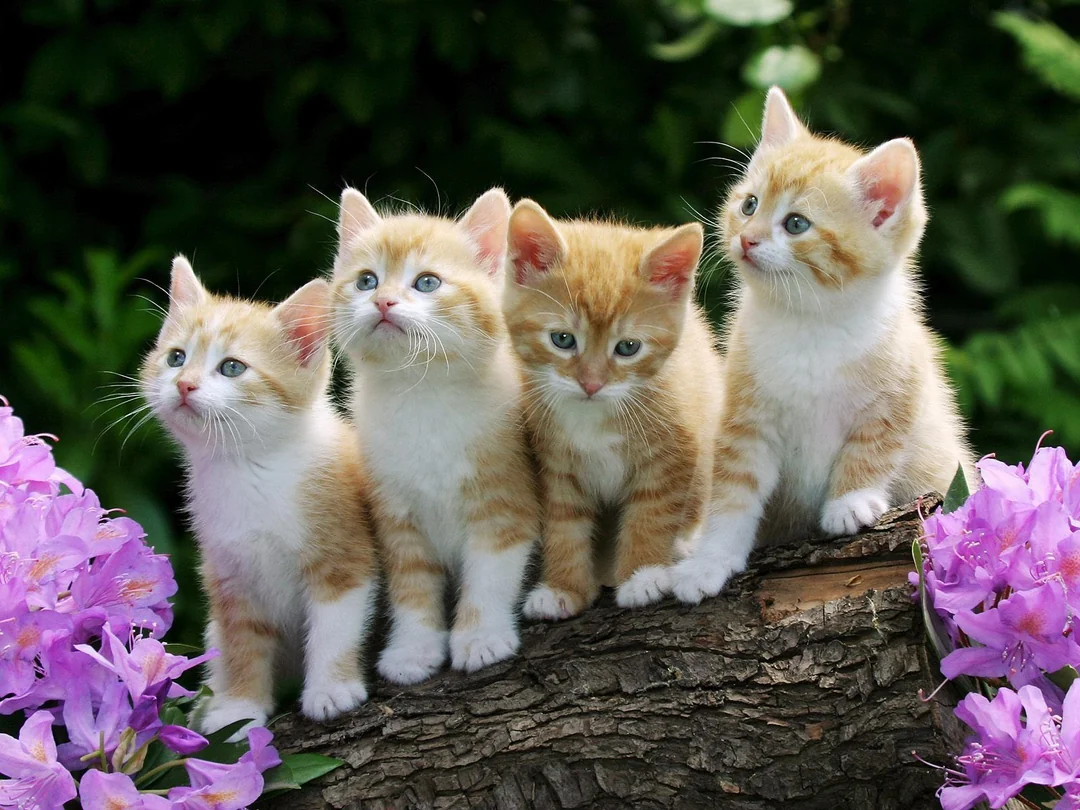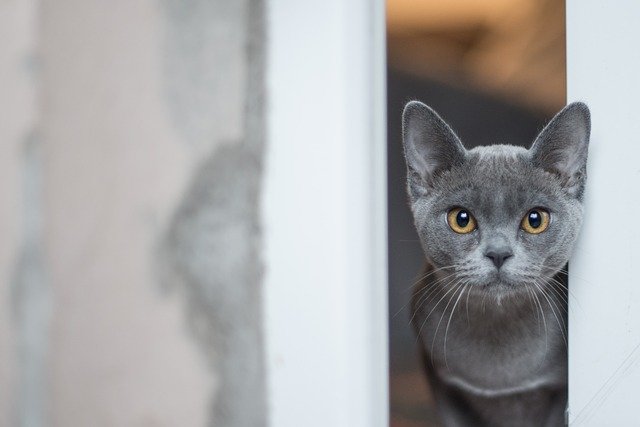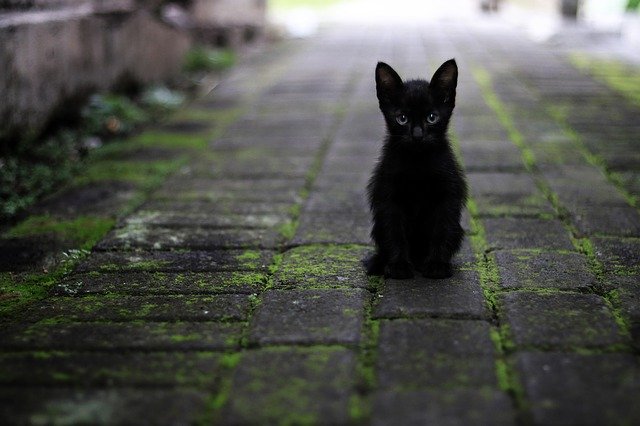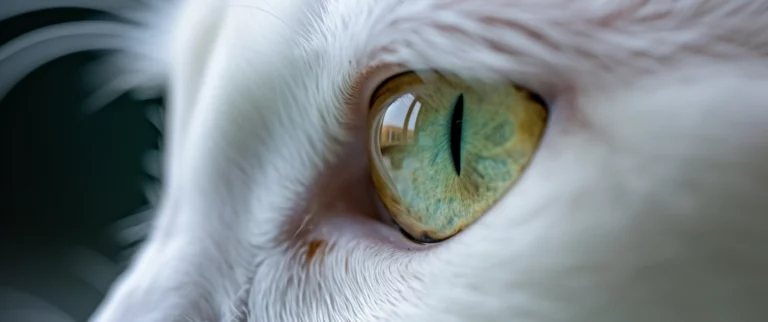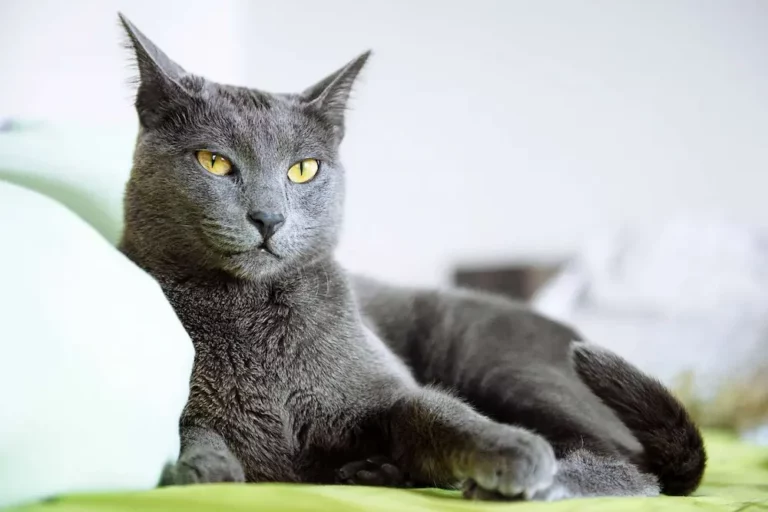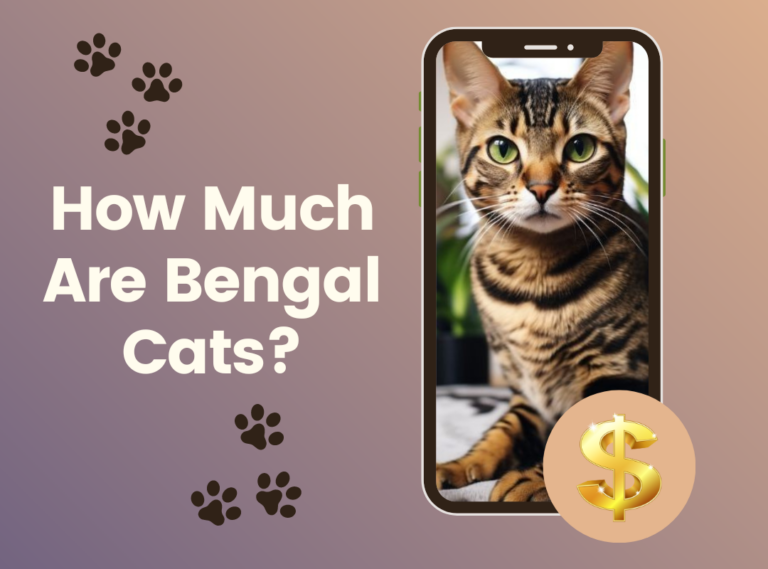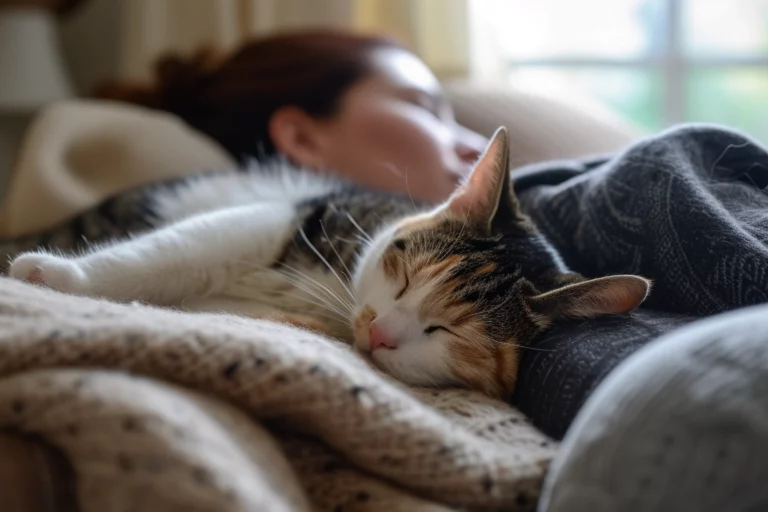12 Most Popular Cat Breeds: Find Your Purrfect Companion
Have you ever wondered what makes certain
With nearly half of
From the plush coats of Persians to the playful spirits of Abyssinians, each breed holds a unique allure.
In a world where the color of a
This article isn’t just a list; it’s a journey into understanding what makes these breeds stand out in the crowded world of feline friends.
Whether you’re a seasoned
1. Ragdoll
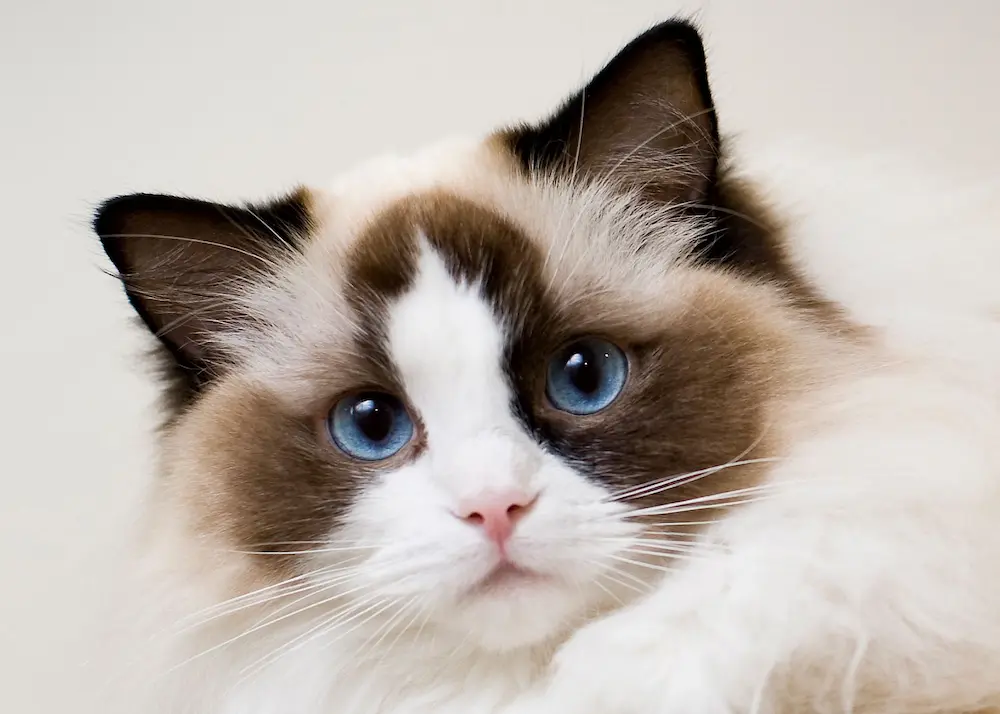
Diving into our journey through the world of popular
Known for its captivating blue eyes and luxurious semi-longhair coat, this breed has charmed its way into becoming a favorite among
Features and Personality Traits
Ragdolls are not just a feast for the eyes; their personalities are equally delightful.
They possess a dog-like tendency to follow their owners around, a trait that endears them to many.
Imagine coming home to a
Their friendly nature makes them excellent family pets, as they get along wonderfully with both children and adults.
Also, Ragdolls are known for their remarkable composure.
Pick them up, and they go limp in your arms, earning them the “ragdoll” name.
This laid-back attitude means they usually adapt well to various household environments.
But, it’s important to remember their trusting nature makes them best suited as indoor cats.
They might not be the best candidates for outdoor adventures, as they can easily trust strangers.
Hence, keeping them indoors, where it’s safe, is a sound strategy to protect these gentle giants.
Care and Grooming Needs
When it comes to care and grooming, Ragdolls are relatively low maintenance compared to other long-haired breeds. Their fur, while thick and plush, is less prone to matting.
This means you won’t have to engage in daily brushing wars.
But, I’d recommend brushing them a couple of times a week to keep their coat in tip-top shape, increase bonding, and reduce the amount of fur on your furniture.
Their semi-longhair coat does require some attention to prevent mats and tangles, especially behind their ears and under their armpits.
A wide-tooth comb and a gentle slicker brush are your best allies in this task.
Starting from a young age, get your Ragdoll accustomed to grooming sessions.
Not only does it keep their coat looking pristine, but it also serves as a special bonding time between you two.
Also, like all cats, Ragdolls need their claws trimmed regularly.
Integrating claw trimming into your grooming routine ensures your
Also, regular dental care should not be overlooked.
Brushing their teeth or providing dental treats can go a long way in preventing dental diseases, which are common in cats.
2. Maine Coon
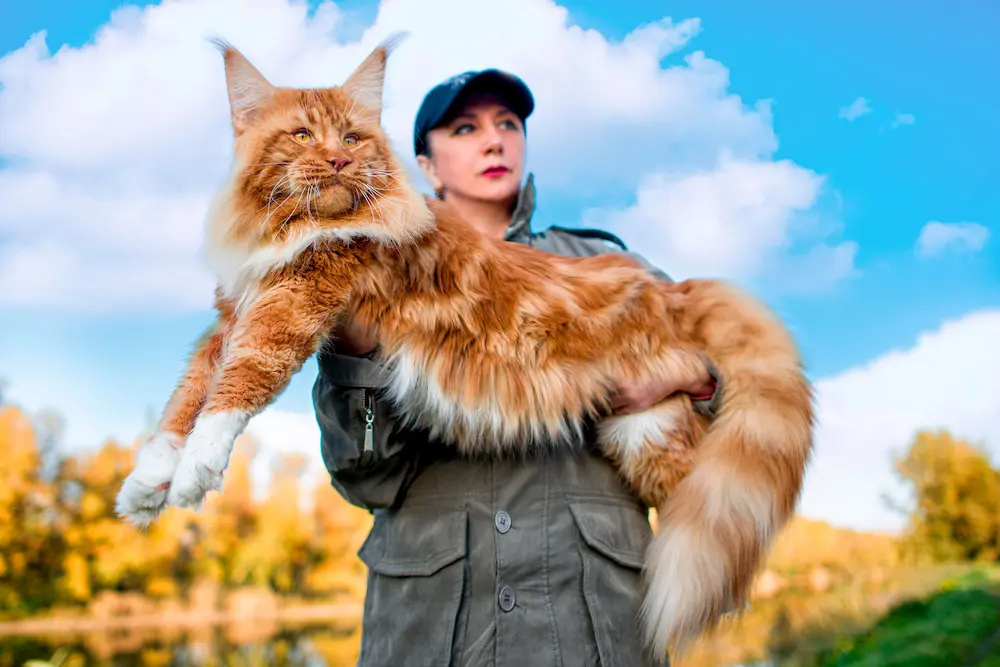
After introducing the serene and captivating Ragdoll, let’s jump into another heart-stealer, the Maine Coon.
Known as “gentle giants,” Maine Coons hold the title of the second most popular
Trust me, there’s a lot to love about these furry friends.
Features and Personality Traits
Maine Coons sport a distinctive physical appearance that’s hard to miss.
With their large, muscular bodies that can weigh up to 20 pounds, they’re like the bodybuilders of the
Don’t be intimidated by their size, though.
These cats have a reputation for being gentle, loving, and incredibly patient, making them fantastic companions for families with children or other pets.
Their most striking feature?
Probably their lush, flowing coats and tufted ears that give them a somewhat lynx-like appearance.
And let’s not forget those big, expressive eyes that seem to convey an understanding far beyond what you’d expect from a
Maine Coons are also known for their sociable and playful nature.
They’re not the type to turn down a game of fetch, and they’re surprisingly good at it too!
Besides, they possess a curious intelligence, often figuring out how to open doors or solve simple puzzles.
This combination of traits makes them not just pets, but genuine members of the family, offering both entertainment and companionship.
Care and Grooming Needs
You might think that a
Maine Coons’ fur is surprisingly low-maintenance, thanks to its texture which resists matting. But, this doesn’t mean you can skip grooming altogether.
A weekly brush should suffice to keep their coat shiny and healthy, preventing any potential mats from forming.
Bathing a Maine Coon isn’t usually necessary, but they’re among the few cats who might actually enjoy water.
If you do decide to bathe them, make sure it’s only as needed to prevent drying out their skin.
Let’s talk about their health.
Given their large size, Maine Coons are susceptible to certain genetic conditions, such as hip dysplasia and heart issues.
Hence, it’s crucial to keep up with regular vet check-ups to catch any potential problems early. A healthy diet and plenty of exercises are also key to maintaining their well-being.
Considering their playful nature, incorporating exercise into their daily routine should be both fun and rewarding.
One last piece of advice: given their curious and adventurous spirit, make sure you provide a stimulating environment with plenty of toys, climbing structures, and space to explore.
They’ll repay you with affection, loyalty, and years of companionship.
3. Persian
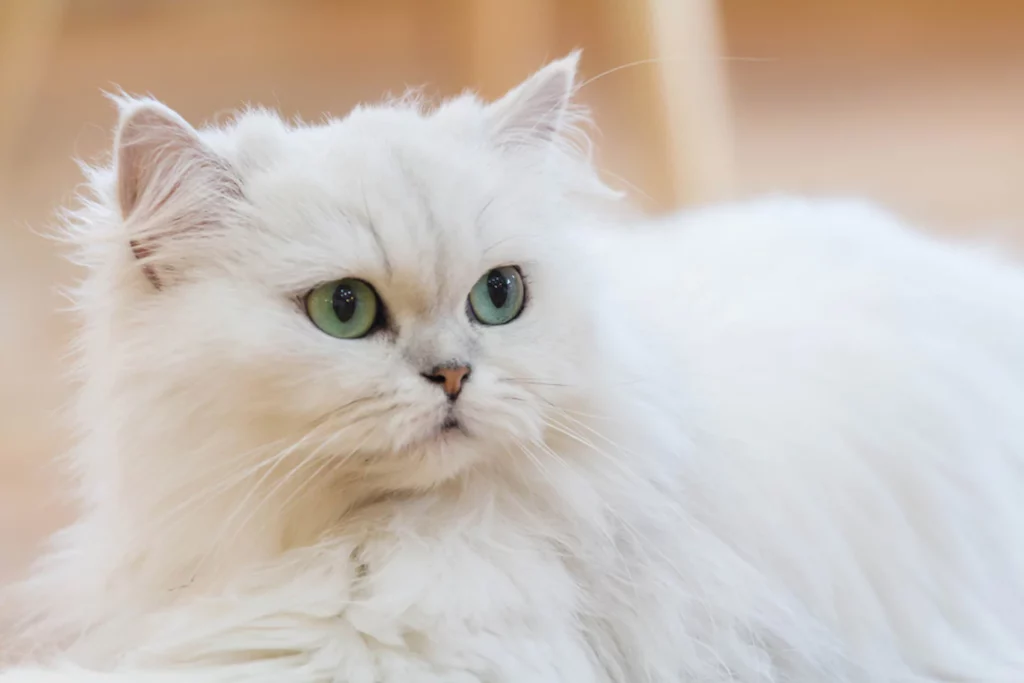
Continuing from our discussion of the friendly giants known as Maine Coons, let’s jump into the world of Persian cats.
These beauties are the quintessence of feline grace and charm, revered for their long, luxurious coats and tranquil disposition.
Features and Personality Traits
Persian cats are the picture of elegance. Imagine the softest, fluffiest pillow you’ve ever laid eyes on, and you’ve got a pretty good idea of a Persian’s coat.
But, it’s not just their appearance that wins hearts; their personalities are equally enchanting.
Persians are calm, affectionate, and enjoy a good cuddle session, making them perfect lap cats.
They’re not the type to scale your curtains or sprint from room to room.
Instead, they prefer lounging in serene spots, observing their domain with a gentle gaze.
Their expressive eyes, round faces, and short muzzles are irresistible, but it’s their sweet, laid-back nature that truly endears them to their human companions.
Persians are known to get along with everyone, including kids and other pets, making them wonderful additions to nearly any home.
But, they do best in quiet environments where their peaceful nature is complemented by the surroundings.
Care and Grooming Needs
Caring for a Persian
Their glorious coats don’t stay pristine without help.
Daily brushing is a must to prevent mats and tangles, which if left unchecked, can lead to skin issues and discomfort for your
Think of it as a serene bonding activity; your Persian will likely enjoy the attention and the soothing sensation of being brushed.
Bathing your Persian might not be a weekly requirement, but it’s something to schedule regularly, perhaps monthly.
It keeps their coat silky and reduces the loose hairs that contribute to hairballs.
Also, pay attention to their eyes; Persians are prone to tear staining due to their facial structure, so gently wiping their eyes daily with a damp cloth is a good practice.
One aspect of Persians that’s easy to overlook is exercise.
You might think their laid-back nature means they don’t need much, but regular, gentle play helps keep them healthy and prevents obesity.
Encouraging movement with interactive toys or laser pointers can be a fun way to engage your Persian in some light exercise.
Besides, because Persians are purebreds, they’re more susceptible to certain genetic conditions.
Regular veterinary checkups are essential to catch and manage any issues early.
And while their serene demeanour might suggest they’re low-maintenance in the personality department, remember, like all cats, they need love, attention, and mental stimulation to thrive.
4. Siamese
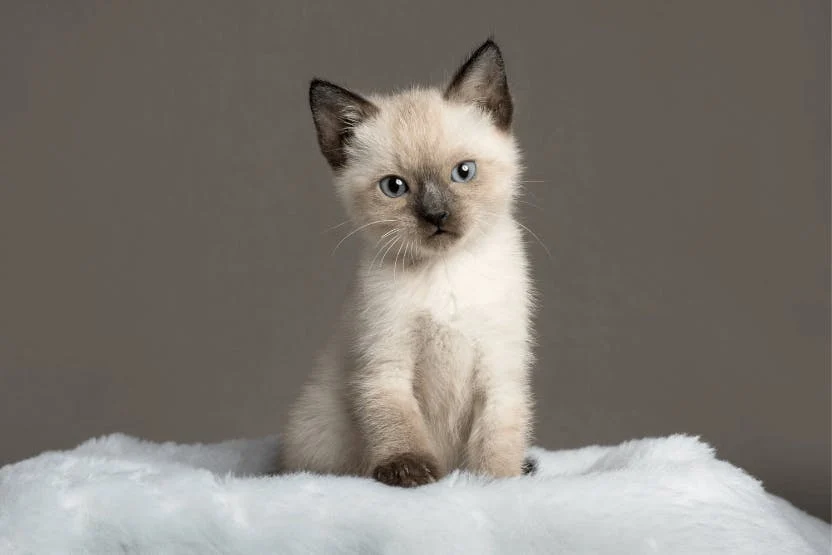
Transitioning from the serene and plush Persians, let’s jump into the world of the Siamese – a breed known for its elegance, intelligence, and vocal personality.
These cats are more than just pets; they’re charismatic companions that engage deeply with their families.
Features and Personality Traits
Siamese cats stand out with their striking blue almond-shaped eyes and sleek, muscular bodies.
Their coat is short but luxurious, featuring unique point coloration; their ears, faces, paws, and tails display darker hues compared to the rest of their bodies.
Usually, these colors range from seal, chocolate, to lilac and blue.
Personality-wise, Siamese cats are the life of the party.
They are incredibly vocal, using a wide range of meows, purrs, and even yowls to communicate their needs and desires.
They are, without a doubt, one of the most intelligent
It’s like having a small, furry person in your home – they’re that interactive!
Also, Siamese cats thrive on social interaction.
They form strong bonds with their owners and can often be found shadowing their human companions from room to room.
They don’t do well with being left alone for long periods; loneliness can lead to stress for these social butterflies.
Hence, they’re perfect for active households where there’s always someone around or another pet to keep them company.
Care and Grooming Needs
Even though their luxurious appearance, Siamese cats are surprisingly low-maintenance when it comes to grooming.
Their short coats require minimal brushing, and this can easily become a bonding experience between you and your Siamese.
I usually recommend doing this once a week to remove any loose fur and keep their coat shiny.
But, their teeth and nails are another story.
Regular dental care is essential for Siamese cats, as they can be prone to dental issues.
Brushing their teeth a couple of times a week with a vet-approved toothpaste can keep gum disease at bay.
And, don’t forget about those claws!
Trimming their nails every couple of weeks will prevent problems associated with overly long claws, such as getting them caught in fabric or furniture.
Finally, Siamese cats’ social nature extends to their intellectual needs.
They require mental stimulation to stay happy and healthy.
So, investing in interactive toys, puzzle feeders, and spending quality playtime each day is a must.
Think of them as your tiny roommates who need entertainment just like the rest of us!
Taking care of a Siamese
They’re not just any
But trust me, the affection and companionship they offer in return are more than worth the effort.
5. British Shorthair
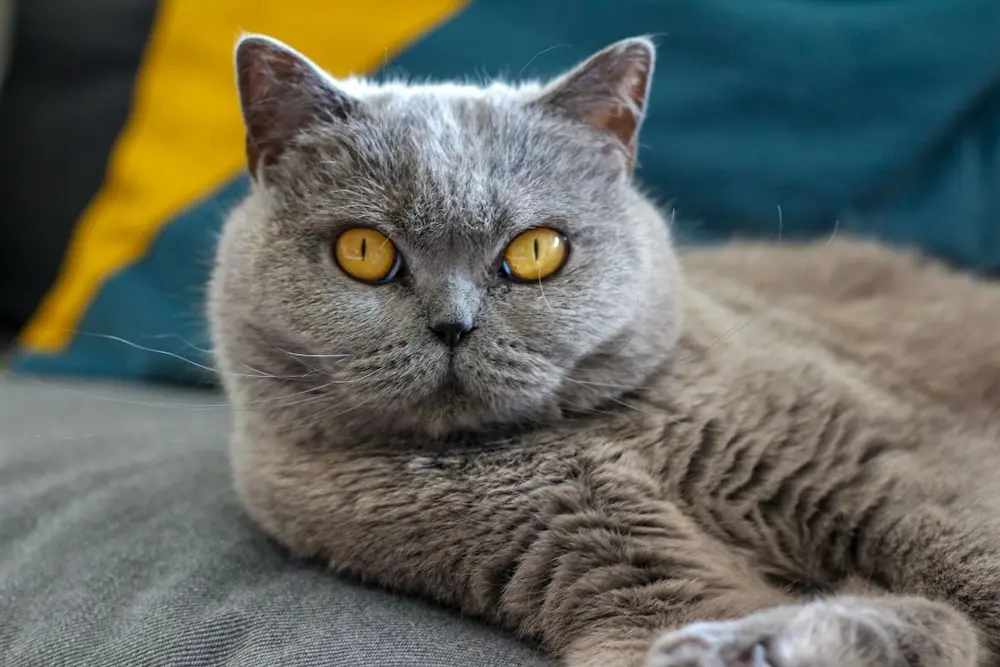
After diving into the world of Siamese cats, I’m thrilled to introduce you to the British Shorthair, a breed that exudes a calm dignity and embodies a plush teddy bear.
This breed isn’t just about its charming looks; it’s packed with a delightful personality that
Features and Personality Traits
The British Shorthair, with its dense, plush fur and famous British Blue color, often garners admiration.
But it’s not just the coat that catches your eye; those round, expressive eyes, typically copper or gold, add to their captivating allure.
Picture a sturdy, well-built
Personality-wise, this breed is the epitome of composure.
They’re not the type to clamor for attention; instead, they prefer observing their kingdom with a serene dignity.
But, don’t mistake their calmness for indifference.
British Shorthairs are known for their loyal, affectionate nature.
They enjoy the company of their human companions, often following them around the house, participating in daily routines with a quiet interest.
Care and Grooming Needs
Caring for a British Shorthair is relatively straightforward, making them an excellent choice for both novice and experienced
Their dense coat does shed, especially during seasonal changes.
Hence, regular brushing, let’s say, twice a week, will not only help manage the shedding but also distribute skin oils throughout their coat, keeping it healthy and vibrant.
When it comes to physical activity, they may not be as high-energy as other breeds, but they still appreciate interactive play sessions.
Think of toys that stimulate their natural hunting instincts—laser pointers, feather wands, or anything that encourages jumping and pouncing.
This not only keeps them physically fit but also sharpens their mental acuity.
Diet is another vital aspect of their care.
Given their less active nature, it’s crucial to monitor their food intake to prevent obesity.
I recommend a balanced diet tailored to their specific age, weight, and health needs.
Consulting with a vet can give you a personalized feeding guide to follow.
And let’s not forget about the regular vet checkups.
The British Shorthair is generally healthy, but they can be prone to certain genetic health issues. Regular health screenings and preventive care are your best defense against common feline diseases.
Caring for a British Shorthair isn’t just about meeting their physical needs; it’s about understanding and respecting their calm, dignified nature.
Remember, every
While I’ve given you a general guide, getting to know your British Shorthair will reveal unique preferences and quirks that make them truly special.
Whether you’re playing together or simply enjoying a quiet evening, the British Shorthair proves to be a wonderful and loving companion.
6. Scottish Fold

Following the plush, dignified British Shorthair, we investigate into another breed that’s all charm and quirks—the Scottish Fold.
Known for its unique folded ears and loving nature, this breed captures hearts effortlessly.
Features and Personality Traits
Scottish Folds are special not just for their distinctive looks, but also their endearing personality traits.
Their ears, which fold forward and downward, give them an almost owl-like appearance.
It’s a genetic trait that makes every Scottish Fold unique, as some may have tightly folded ears while others have a single fold, looking more like their straight-eared counterparts.
Personality-wise, these cats are like the friends everyone loves to have around—calm, loyal, and always up for a cuddle.
They’re known to adopt some pretty adorable poses, like sleeping on their backs, which just adds to their charm.
And let’s not forget, Taylor Swift’s own Scottish Folds, Olivia Benson and Meredith Grey, are prime examples of how affectionate and companionable these cats can be.
But, it’s their sociable nature that really sets them apart.
They get along famously with children and other pets, making them perfect family additions.
They have a serene demeanor, but don’t be fooled—they’re intelligent and playful too.
They’ll engage in play but on their terms, often favoring interactive toys that challenge their hunting instincts.
Care and Grooming Needs
Caring for a Scottish Fold requires a bit of extra attention, especially when it comes to their unique ears.
These folded marvels can be more susceptible to buildup and infections, so you’ll need to check and clean them regularly.
But don’t worry, it’s not as daunting as it sounds. A gentle wipe with a damp cloth usually does the trick; just be sure to be as delicate as possible.
Their coats, while not overly demanding, still necessitate routine grooming.
A weekly brush to remove dead hair and distribute skin oils is sufficient to keep their coat in tiptop shape.
Thanks to their short, dense fur, Scottish Folds are somewhat low maintenance in the grooming department compared to long-haired breeds.
The health of your Scottish Fold should always be at the forefront.
Unfortunately, their cute ears can lead to cartilage-related issues, affecting not just their ears but their joints too.
Regular vet visits are crucial to ensure your feline friend remains as healthy as possible.
To wrap up, I’d say the Scottish Fold is a breed that, while needing a bit more care, particularly with their ears, rewards you with unmatched affection, playful antics, and peaceful companionship.
Ideal for families or as a solo companion, they make life a bit sweeter with their presence.
So, if you’re prepared for the extra care, they could very well be the purrfect addition to your home.
7. Sphynx
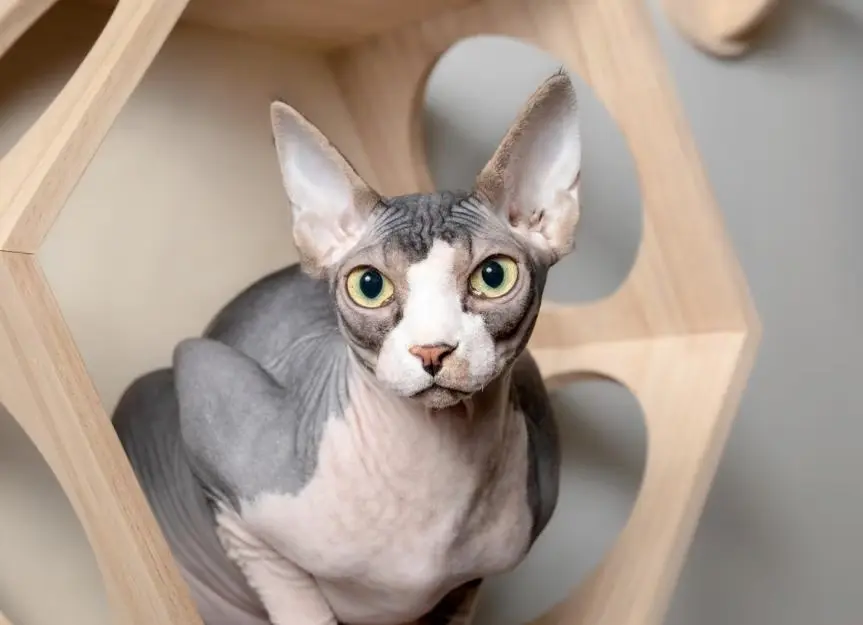
Moving on from the adorable Scottish Folds, let’s talk about the Sphynx, a breed that’s sure to turn heads.
Known for its hairless appearance, the Sphynx is more than just its unique looks.
This breed combines charisma with a loving personality, making it a fascinating addition to any home.
Features and Personality Traits
The first thing you’ll notice about a Sphynx is, of course, its lack of fur.
But, they’re not entirely bald; a fine peach fuzz covers their body, giving them a suede-like texture that’s pleasant to the touch.
Their large lemon-shaped eyes and oversized ears add to their distinct appearance, making them immediately recognizable.
Personality-wise, these cats are clowns at heart.
They’re incredibly energetic, affectionate, and love being the center of attention.
If you’re watching TV or working on your laptop, expect a Sphynx to plant itself right in the middle of your activity, craving interaction and warmth.
Sphynxes are also profoundly social.
They get along brilliantly with children, other cats, and even dogs, making them fantastic family pets.
Their intelligence and curious nature mean they’re always up for a game or puzzle, keeping both you and them entertained.
Care and Grooming Needs
Caring for a Sphynx is quite different from looking after a fur-covered
Their lack of fur means they’re more vulnerable to the elements.
Sunblock is a must during sunny days, and in colder months, they’ll need sweaters or blankets to stay warm.
Comfort should always be a priority for these heat-seeking pets.
Their skin secretes oil, which in a furry
Hence, a regular bath routine is essential to prevent oil buildup, which can lead to skin problems.
I’ve found that using gentle,
Also, their large ears will collect more dirt and wax than those of other breeds, necessitating weekly cleanings.
A soft, damp cloth is usually sufficient for this task. Just be gentle and don’t probe too deeply to avoid injury.
Finally, their curious and adventurous nature means they can often get into mischief.
Keeping an eye on them and ensuring they’re in a safe,
I’ve learned that providing plenty of toys and climbing structures can satisfy their adventurous spirit in a safe manner.
8. Bengal
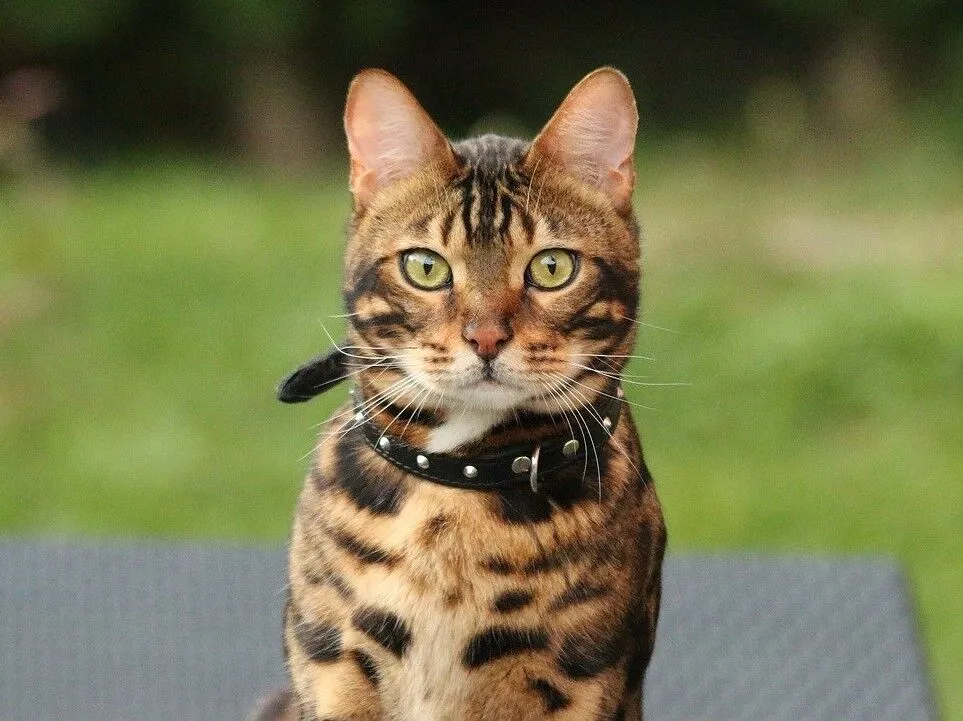
Moving on from the distinctive Sphynx, let’s jump into the world of the Bengal
Known for its wild appearance and dynamic personality, the Bengal
Let’s get to know this adventurous breed a bit better.
Features and Personality Traits
Bengals are a marvel, blending domestic
Weighing up to 58 pounds, their muscular bodies are draped in a coat that’s a kaleidoscope of colors, typically marked with beautiful spots or marbled patterns reminiscent of their wild ancestors.
But, it’s not just their looks that grab attention; their personality does too.
Imagine having a little leopard in your home that’s not only visually stunning but also bursting with energy and affection.
Bengals are adventurous and highly intelligent, showcasing a level of curiosity that keeps them on the prowl for new discoveries.
They love interacting with their human families, making them fantastic companions for kids and other pets.
Yet, they defy the typical lap
Besides, their adaptability to noisy environments and affection for water sets them apart from the typical household
Care and Grooming Needs
Firstly, they need a lot of stimulation: think toys, puzzles, and climbing trees to keep their agile minds and bodies engaged.
Due to their intelligence, Bengals thrive in an environment where they can explore and play, yet it’s crucial to keep them indoors to safeguard them from external threats and preserve local wildlife.
Grooming a Bengal is less daunting than it might seem.
Their short coats shed moderately and are generally low maintenance.
A weekly brushing will suffice, helping to remove loose hair and distribute skin oils evenly, keeping their coat glossy and healthy.
It’s a great bonding activity, too!
But, remember while some consider Bengals hypoallergenic, they do produce dander and allergens like any other breed, so they might not be the best fit for those with severe allergies.
9. Abyssinian
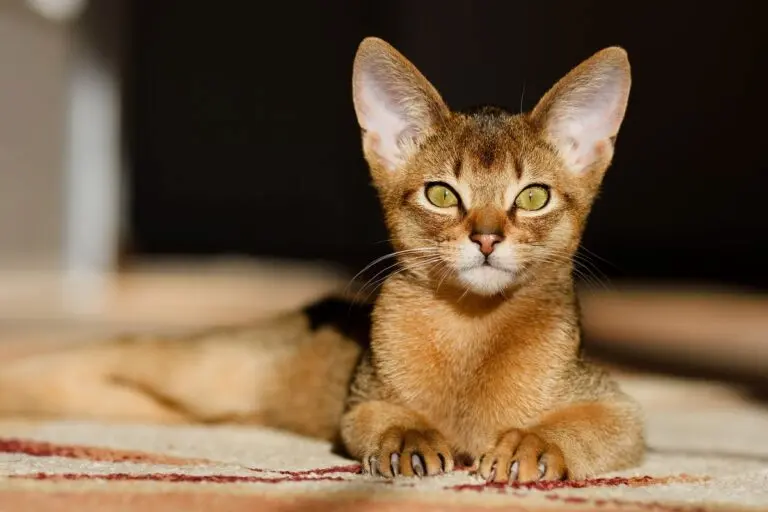
Moving on from the majestic Bengals, let’s jump into the world of Abyssinians, a breed that consistently captures hearts with its elegant appearance and lively disposition.
Known as the athletes of the
Features and Personality Traits
Abys are the very definition of beauty in motion.
They’re sleek, with a muscular body that’s always ready for the next adventure.
As someone who’s lived with an Abyssinian, I can tell you, watching them move is like observing a dancer — every leap and bound is precise and graceful.
Their most distinctive feature, though, is their gorgeous ticked coat, offering an illusion of a warm glow from within.
Colors range from ruddy to red, blue, and fawn, making them a standout breed visually.
Personality-wise, they’re a bundle of joy — intelligent, playful, and endlessly curious.
They prefer being an active participant in your life, whether it’s “helping” with your chores or investigating every new item you bring into the house.
Even though their boundless energy, Abys form strong bonds with their owners and can be quite affectionate.
But, don’t expect them to be lap cats, as they’re much too busy exploring the world around them.
Care and Grooming Needs
Caring for an Abyssinian is relatively straightforward, given their low-maintenance coat.
Weekly brushing should suffice to remove any loose hairs and maintain their coat’s natural shine.
I’ve found that their fascination with water makes bath time less of a hassle, though it’s rarely needed.
Exercise is non-negotiable for Abys.
To keep them stimulated and prevent potential mischiefs, you’ll want to ensure they have access to a variety of toys, climbing structures, and puzzle feeders.
I personally recommend setting up an obstacle course or engaging in interactive play sessions to satisfy their need for mental and physical stimulation.
Even though their robust appearance, Abyssinians might inherit genetic conditions such as renal amyloidosis and hypertrophic cardiomyopathy.
To sum it up, if you’re yearning for an animated, charming companion who’ll keep you on your toes, the Abyssinian might just be your perfect match.
Just remember, they’re not the type to sit still for long, so be prepared for a lively, enriching experience with these beautiful creatures.
10. American Shorthair
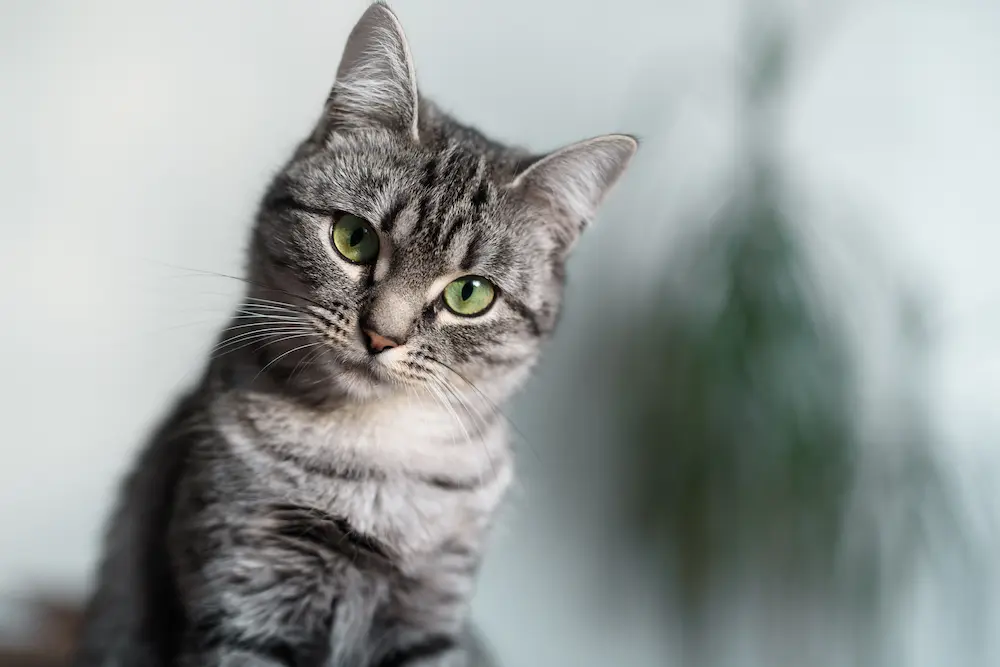
Following the vivacious and energetic breeds discussed previously, it’s time to turn our attention to an all-American classic.
The American Shorthair is a breed that combines a robust work ethic with a laid-back personality, making it a perfect family pet.
Features and Personality Traits
American Shorthairs are the epitome of balance in the
Not too big or too small, they sport a muscular build that hints at their lineage as efficient rodent catchers.
Their coat comes in a variety of colors and patterns, the most famous being the classic silver tabby with striking black markings against a shimmering silver background.
Personality-wise, they strike a perfect chord between independence and affection.
They’re not clingy but won’t say no to a cozy lap to curl up on.
I’ve found that American Shorthairs have a sociable nature, easily getting along with humans and other pets alike.
Their easygoing temperament makes them ideal for families, blending seamlessly into the household’s daily routine.
Think of them as the well-adjusted middle child; they’re perfectly content to play when you’re up for it but equally happy to entertain themselves.
They exhibit a keen intelligence, showing an interest in puzzle toys or anything that stimulates their hunting instincts.
Care and Grooming Needs
Unlike some of the high-maintenance breeds previously discussed, American Shorthairs are remarkably low-key.
Their short, dense coat doesn’t require the daily grooming that breeds like Persians do.
But, they do benefit from a weekly brushing to minimize shedding and keep their coat shiny.
It’s a great way to bond with your American Shorthair, turning grooming into a session of mutual affection.
As for their health, this breed is a hearty stock, because of its natural selection through harsh New England winters and demanding pest control duties in early American settlements.
Nonetheless, keeping up with regular vet checkups and vaccinations is crucial.
Obesity can be a concern, especially if your American Shorthair becomes more of a couch potato, so it’s essential to manage their diet and ensure they get enough playtime.
Even though they’re rugged and independent by nature, don’t skimp on providing toys and activities that cater to their hunting instincts.
A variety of interactive toys can simulate the mental and physical engagement of hunting, keeping them physically fit and mentally sharp.
To conclude, if you’re looking for a breed that embodies the American spirit of independence with a friendly demeanor, the American Shorthair is your go-to.
They’re the kind of pet that fits into most lifestyles, asking for just a bit of grooming, regular healthcare, and a dash of playtime.
Following these simple care guidelines will ensure your American Shorthair lives a long, happy, and healthy life by your side.
11. Exotic Shorthair
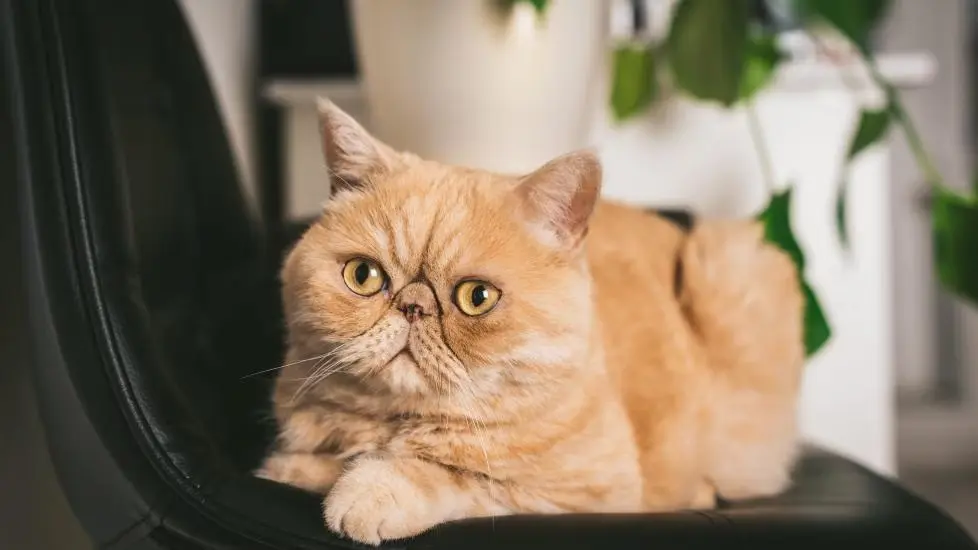
Let’s jump into the world of the Exotic Shorthair, a breed that brings the best of both whimsy and tranquility into your home.
These cats are the teddy bears of the feline kingdom, and I can’t wait to share why.
Features and Personality Traits
Picture this: a
That’s the Exotic Shorthair.
They sport a shorter, dense coat that feels incredibly soft to the touch, much like a warm, living plush toy.
Their round faces and big, expressive eyes give them an eternally youthful appearance that’s just hard to resist.
Personality-wise, Exotic Shorthairs are as sweet as they come.
They inherit the Persian’s calm and affectionate nature but often with a bit more energy.
I’ve found them to be quiet companions who adore nothing more than a cozy nap on your lap.
Yet, they won’t say no to a playful chase of a string toy either.
Their mellow disposition makes them excellent pets for families, singles, and seniors alike.
They’re the kind of
Care and Grooming Needs
If you’re wondering about what it takes to keep an Exotic Shorthair looking and feeling their best, you’re in for some good news.
Their short, plush coat requires significantly less grooming than long-haired breeds.
A once-a-week brush through is generally enough to keep their coat free of mats and tangles.
This weekly grooming session is not just about cleanliness; it’s a bonding time between you and your pet, a moment to strengthen your connection.
But, their round, flat faces do mean they may need a little extra care in the cleaning department.
Their tear ducts can be prone to overflow, so a gentle wipe with a soft, damp cloth can keep their eyes bright and clear.
Also, their face folds (if they have any) should be checked and cleaned regularly to avoid any potential skin issues.
In terms of their health, Exotic Shorthairs are generally robust, but being a brachycephalic (flat-faced) breed, it’s crucial to be aware of potential respiratory or dental issues.
It’s always a good idea to provide plenty of toys and engage in daily playtime.
This not only keeps them physically fit but mentally stimulated, too.
Remember, a bored Exotic can become an overweight one, given their laid-back nature.
12. Devon Rex
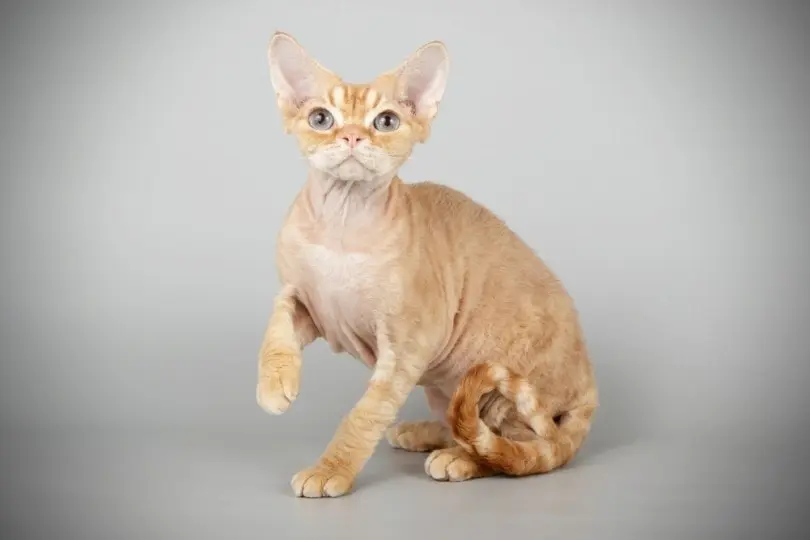
Moving on in our exploration of popular
These cats stand out not only for their unique looks but also for their affectionate, playful nature. Let’s jump into what makes them so special.
Features and Personality Traits
The Devon Rex is quite the character, boasting a slender body, large ears, and an elfin face that looks like it jumped straight out of a fairy tale.
Their coats are short, curly, and incredibly soft to the touch, thanks to a unique genetic trait.
But it’s not just their looks that captivate; their personalities are equally enchanting.
These cats are the definition of sociable.
They love being involved in whatever you’re doing, whether it’s tapping away at your keyboard or preparing dinner.
They’ll often perch on shoulders or curl up in laps, eager for attention and affection.
Their playful, mischievous nature means they’re always up for games, making them a delightful companion for families.
Besides, Devon Rex cats are known to be exceptionally intelligent.
They can learn tricks, respond to their names, and even master the use of a litter box with astonishing speed.
This intelligence, combined with their playful demeanor, makes them engaging pets that are always entertaining to be around.
Care and Grooming Needs
Though their coats are low-maintenance compared to long-haired breeds, Devon Rex cats still require some specific care.
Their curly fur doesn’t shed much, but it does collect oil.
Hence, regular bathing every couple of weeks is recommended to keep their coat clean and healthy.
Use a mild
Their large ears also need attention, as they can accumulate dirt and wax more quickly than other breeds.
A weekly check and gentle cleaning with a damp cloth or a veterinarian-approved ear cleaner should keep any issues at bay.
One often overlooked aspect of Devon Rex care is their need for warmth.
With less fur to keep them insulated, they seek out warm spots, be it a sunlit window or a cozy blanket.
Ensure they have a warm place to snuggle up, especially during colder months, to keep them comfortable and happy.
Finally, don’t forget about mental stimulation.
Devon Rex cats are intelligent and curious, so puzzle toys, interactive play sessions, and safe outdoor enclosures can help keep their minds active and satisfy their adventurous spirits.
Summarizing, the Devon Rex requires a balance of physical care and mental engagement to thrive.
They’re not just pets; they’re companions who’ll bring joy and laughter into your home with their playful antics and affectionate nature.
With the right care and attention, a Devon Rex can become a cherished member of any family, making every day a little brighter and a lot more fun.
Conclusion
Exploring the world of these 12 popular
From the majestic Maine Coon to the intriguing Devon Rex, each breed brings its own unique charm and set of care requirements.
It’s clear that whether you’re looking for a cuddly companion or a playful pal, there’s a
I’ve loved diving into the distinct personalities and needs of these furry friends, and I hope you’ve found the insights helpful in choosing your next or first pet
Remember, each
